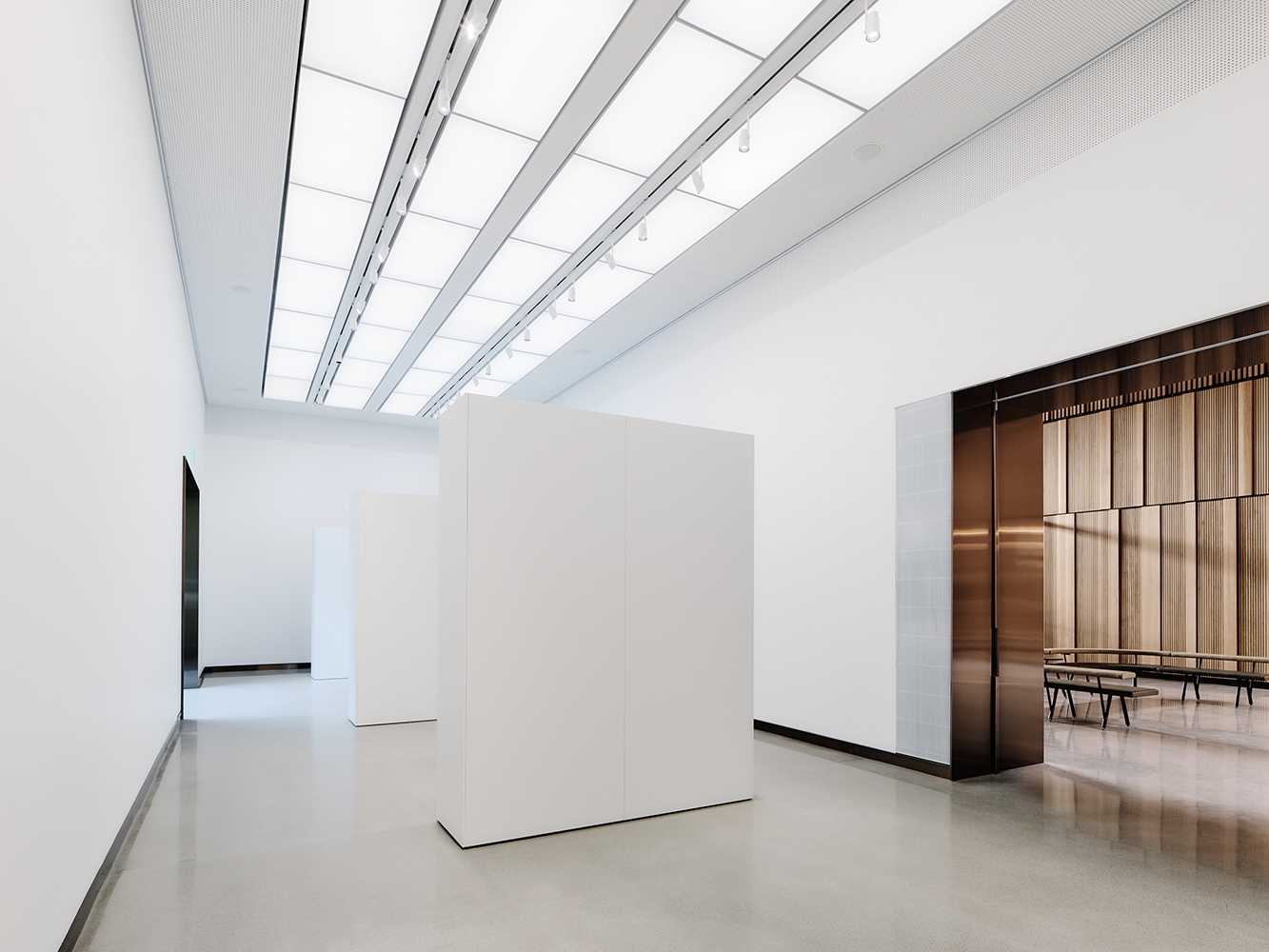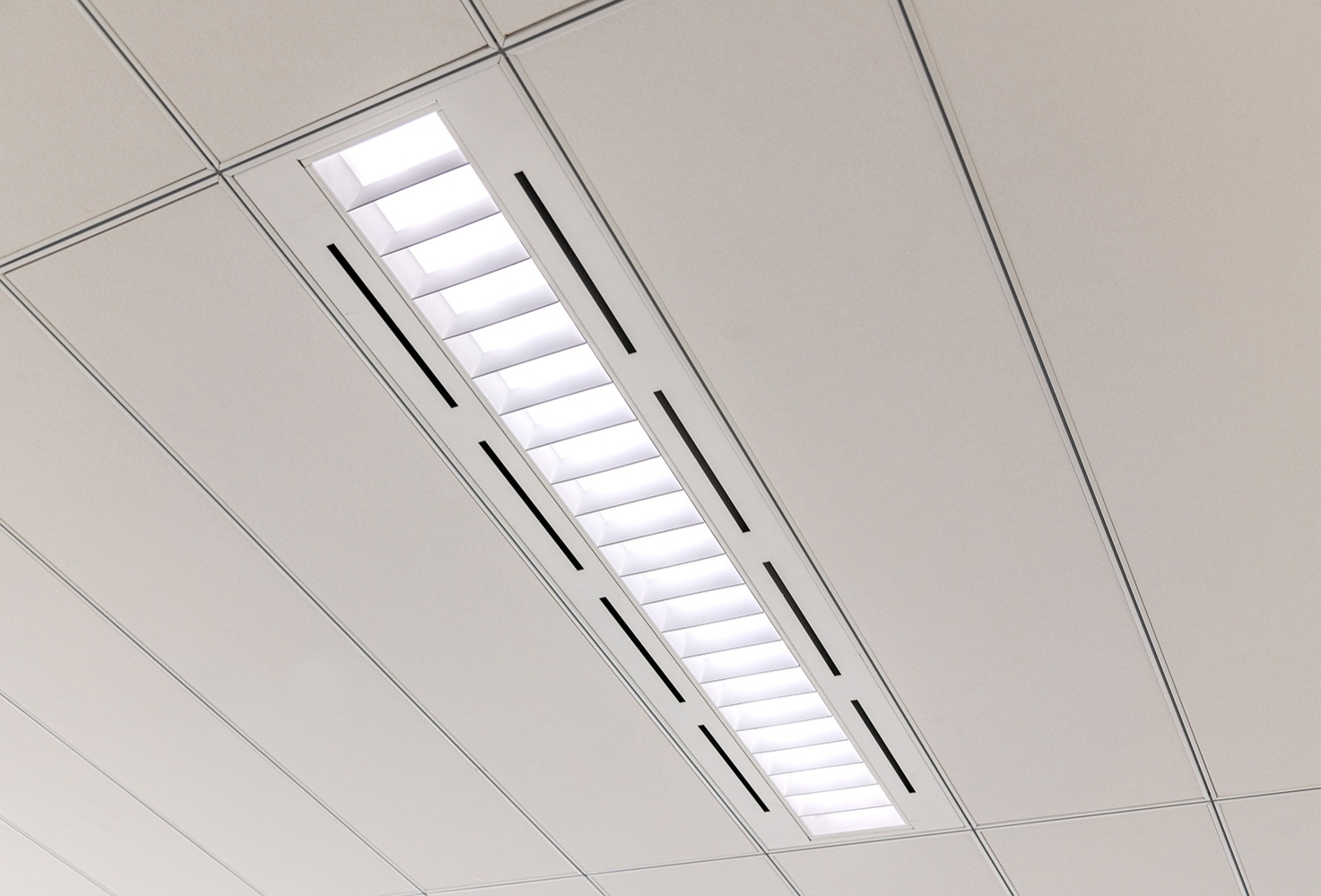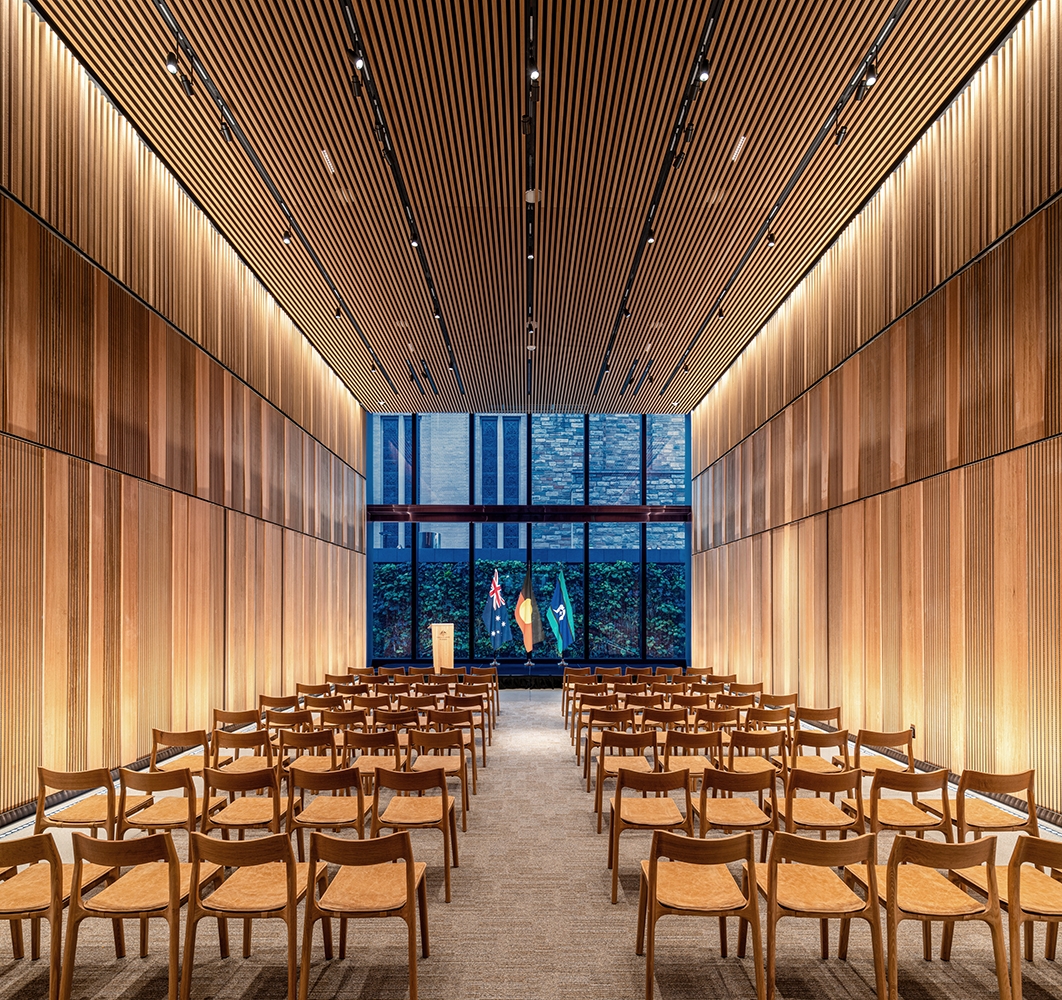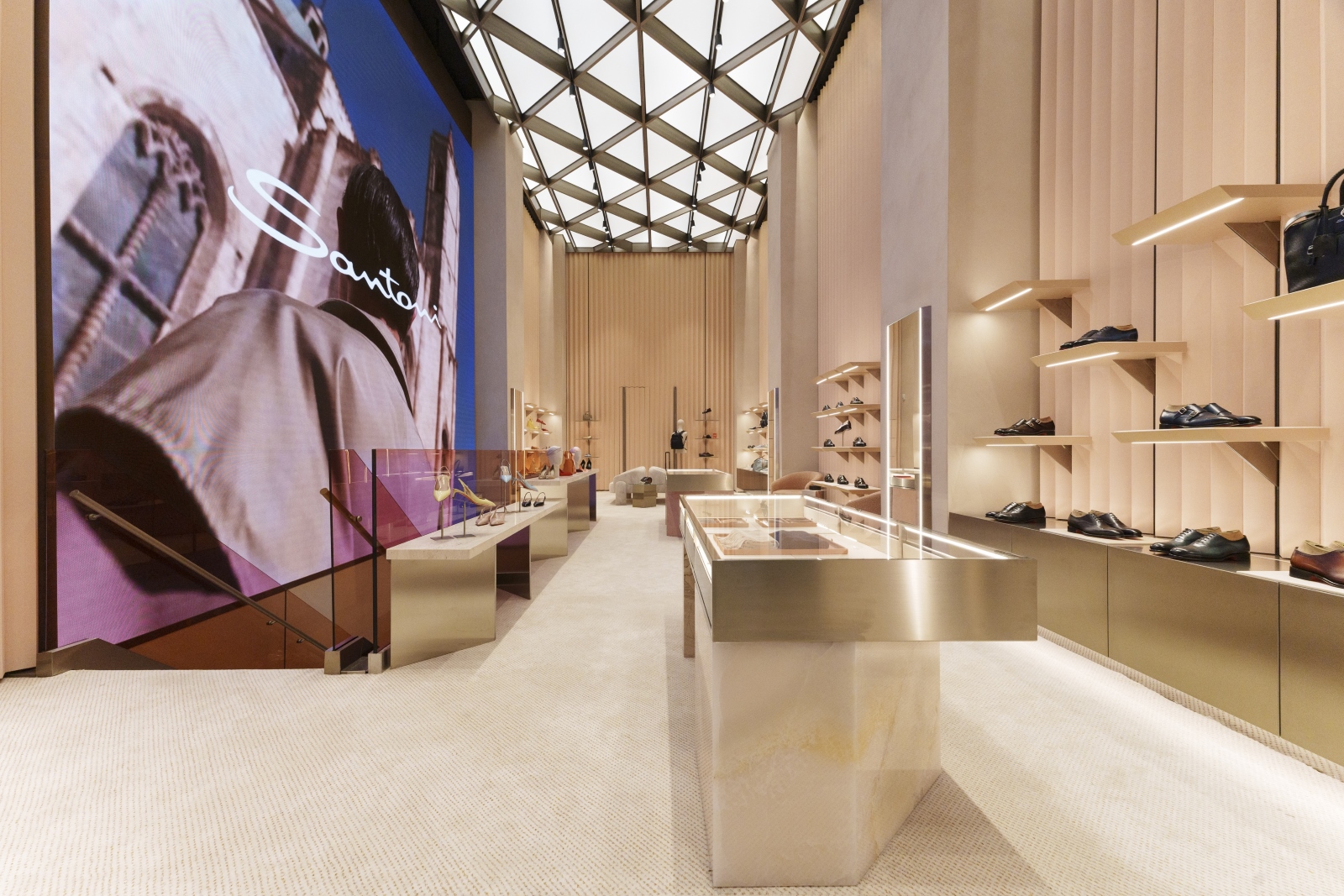Header: Ambridge Photography
The award-winning lighting design for the Embassy of Australia in Washington, D.C., was developed as part of a broader architectural collaboration. The collaboration focused on creating a cohesive interior environment where light would support the building’s varied functions. The designers from Electrolight, Jess Perry and Horatio Burton, attempted to integrate lighting as discreetly as possible, using concealed sources and indirect techniques to enhance surfaces, frame volumes, and bring attention to the textures of stone, timber, and metal.

The design
In the public areas, where visitors first enter the building, the lighting was designed to work alongside a rotating collection of artworks, including floor-standing sculptures, suspended elements, and framed pieces that appear throughout the foyers and communal spaces. This gallery-like condition is maintained in other shared spaces, with light having been used to create a calm and evenly illuminated environment that doesn’t draw attention to itself.
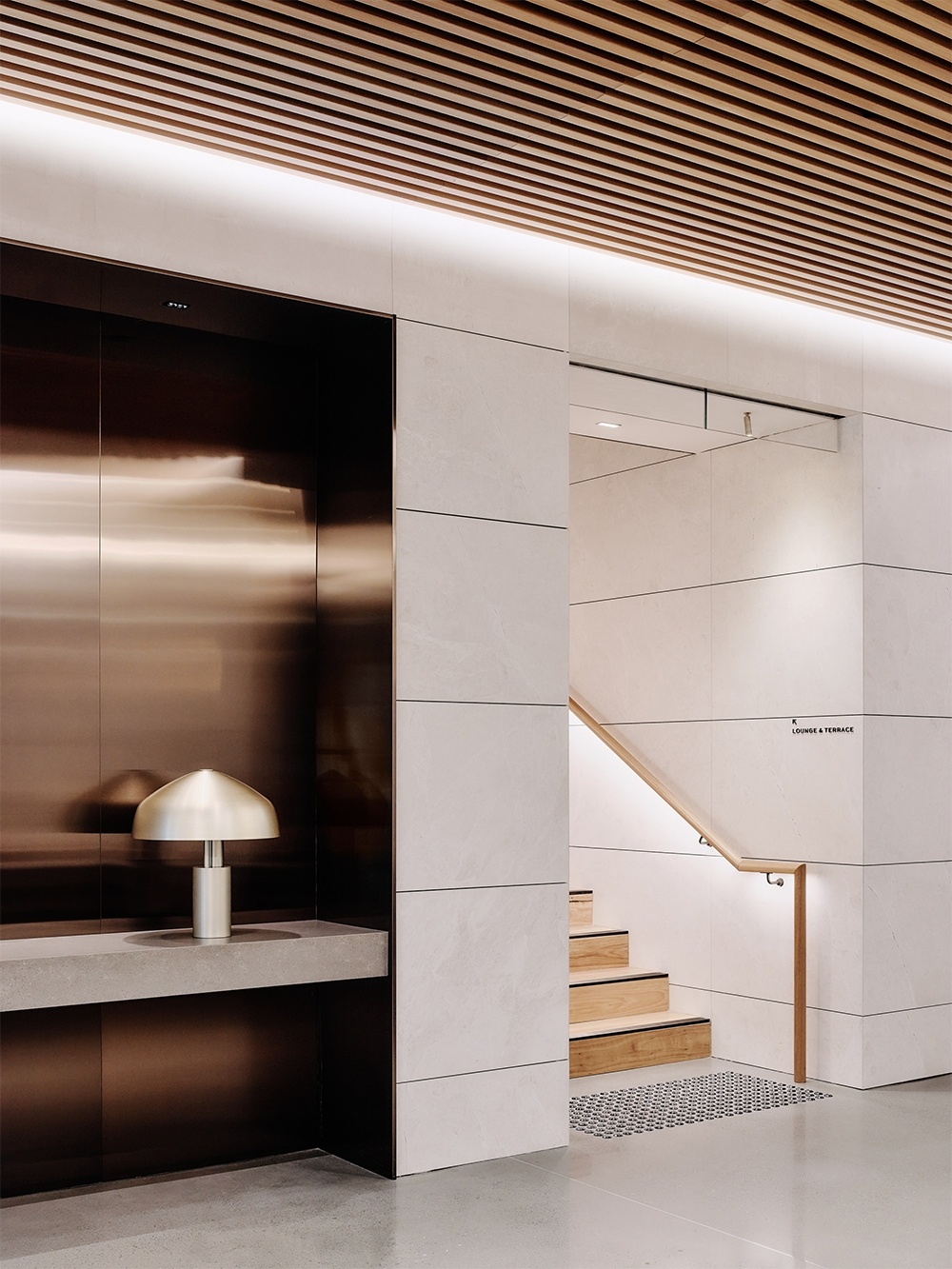
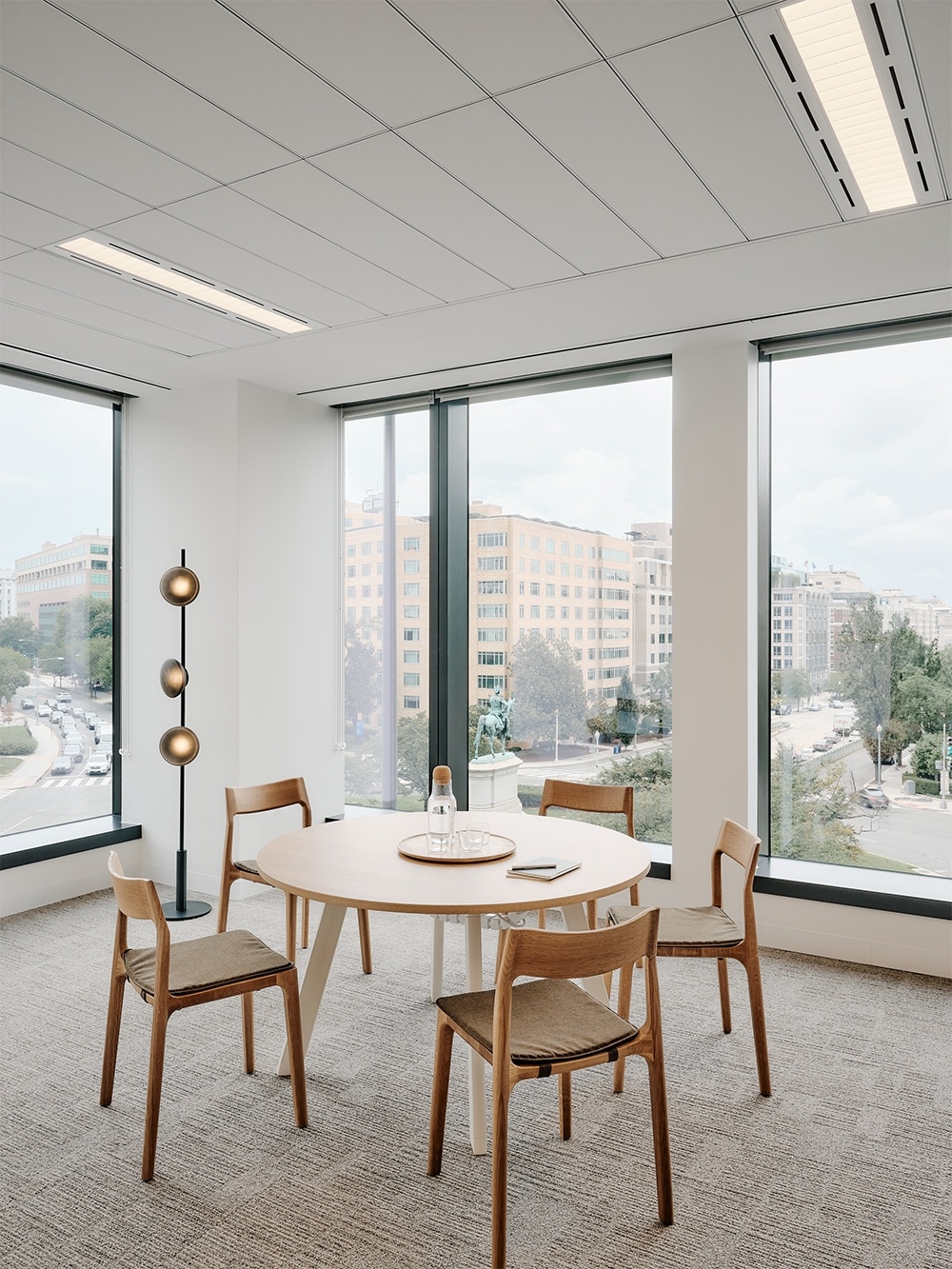
On the office levels, the design had to respond to more specific technical needs, as the ceilings were required to accommodate both lighting and mechanical functions within a compact section. This challenge led to the development of custom fittings that combined lighting fixtures with air supply, return, and acoustic filtering. These lighting sources were built to meet fire and sound requirements while blending with the rest of the ceiling, allowing light to glow uninterrupted across work areas and shared desks without introducing additional elements that might complicate the overall aesthetics.
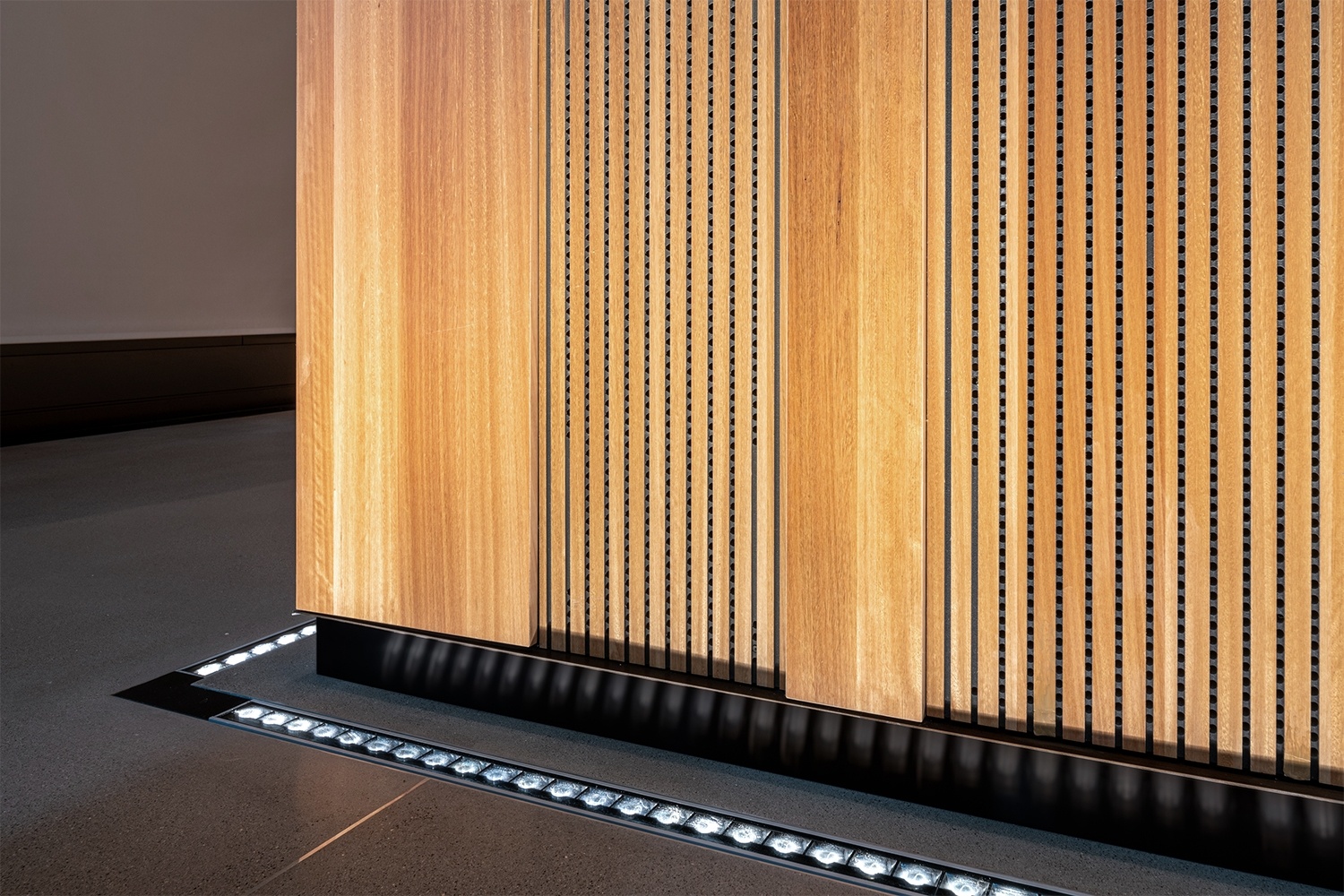
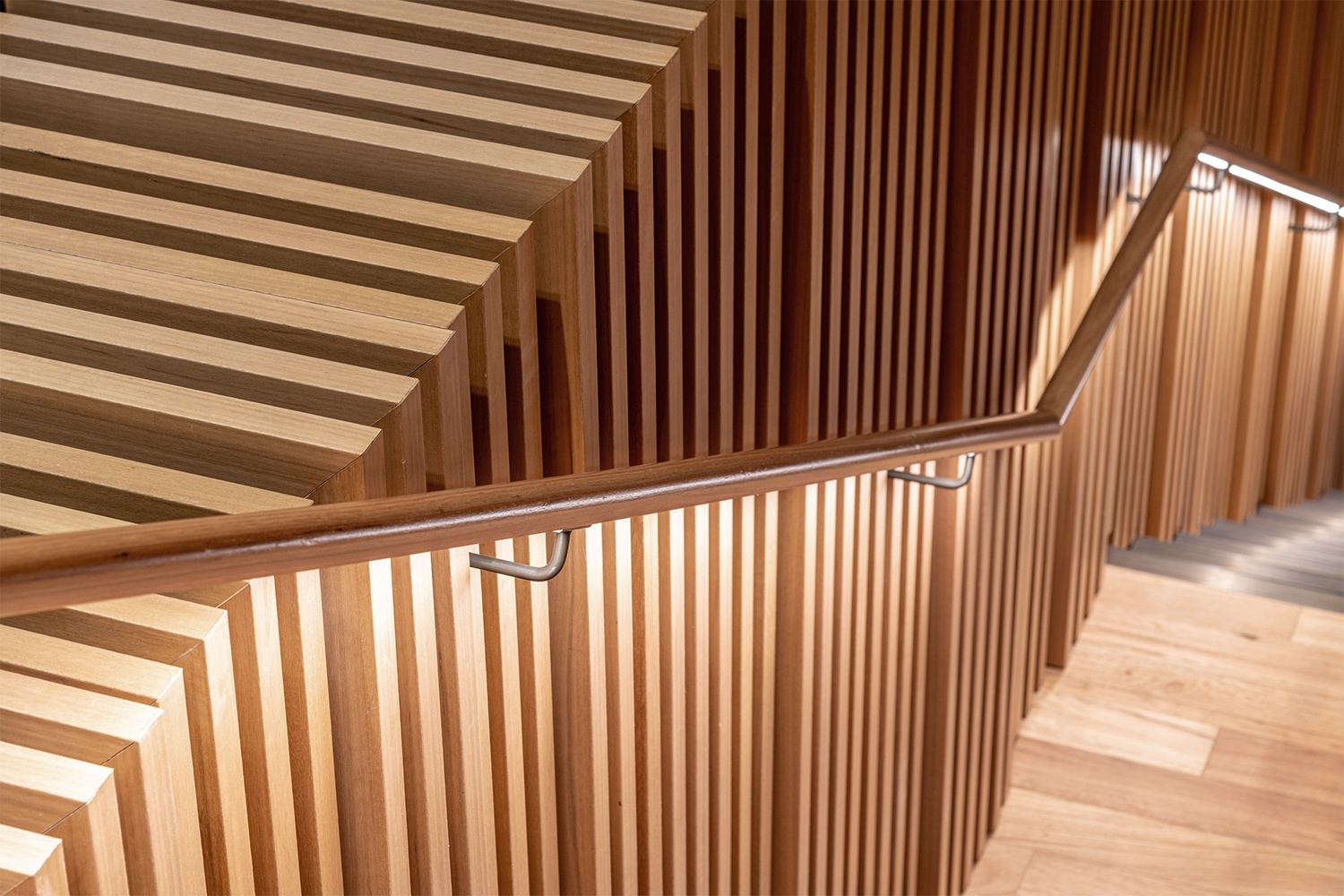
Sustainability
Throughout the building, a smart control system adjusts lighting in response to occupancy, daylight availability, and the movement of the sun. It uses a combination of sensors and pre-programmed settings to reduce energy use during brighter periods of the day and extend the life of each fixture through dimming and other selective operations.
